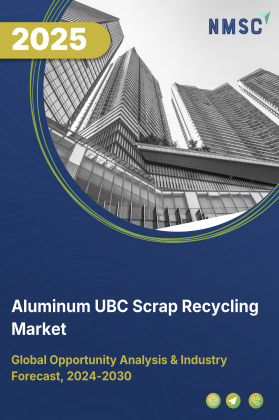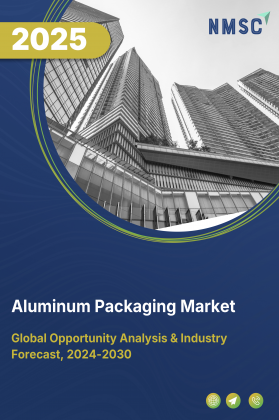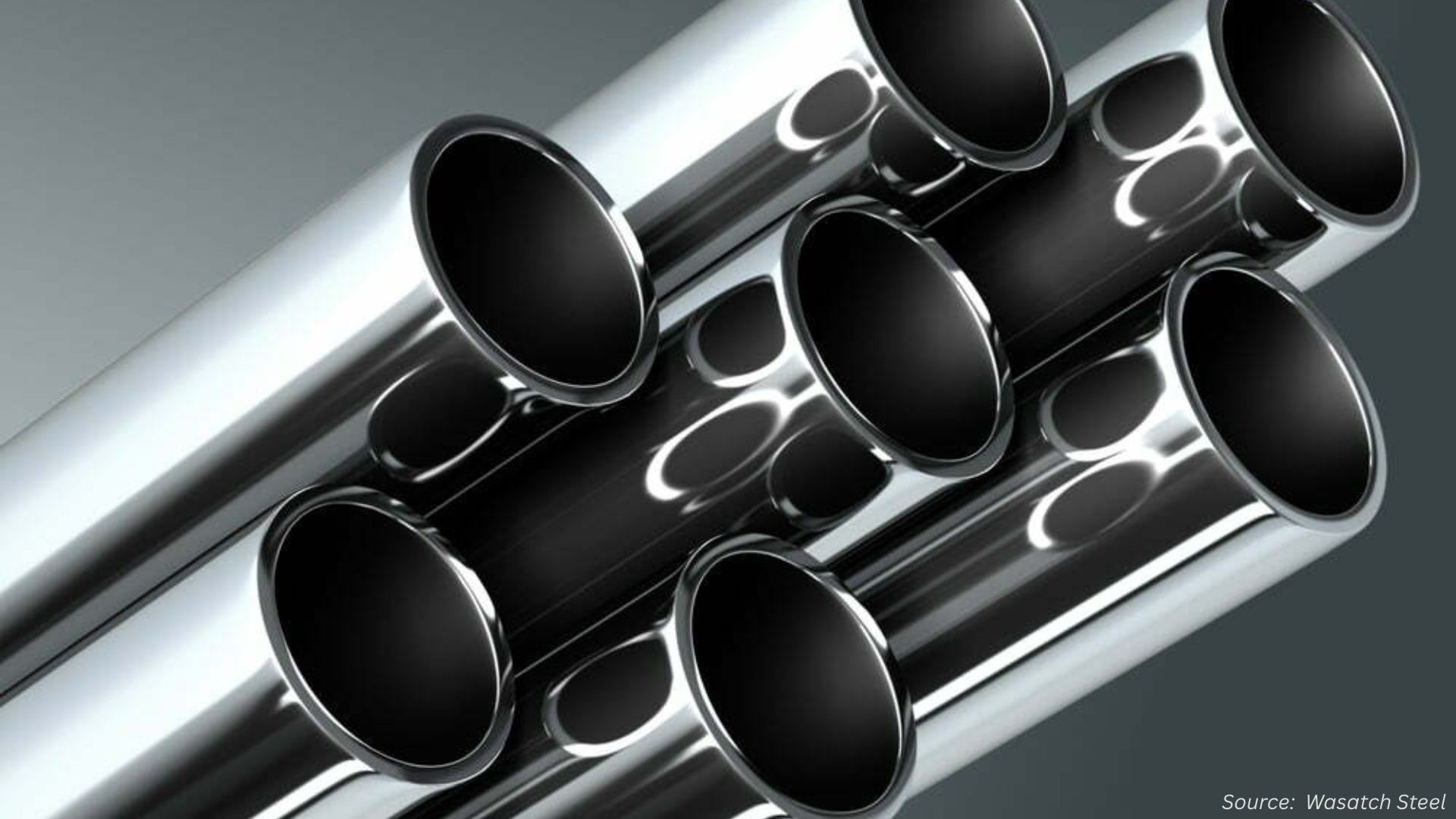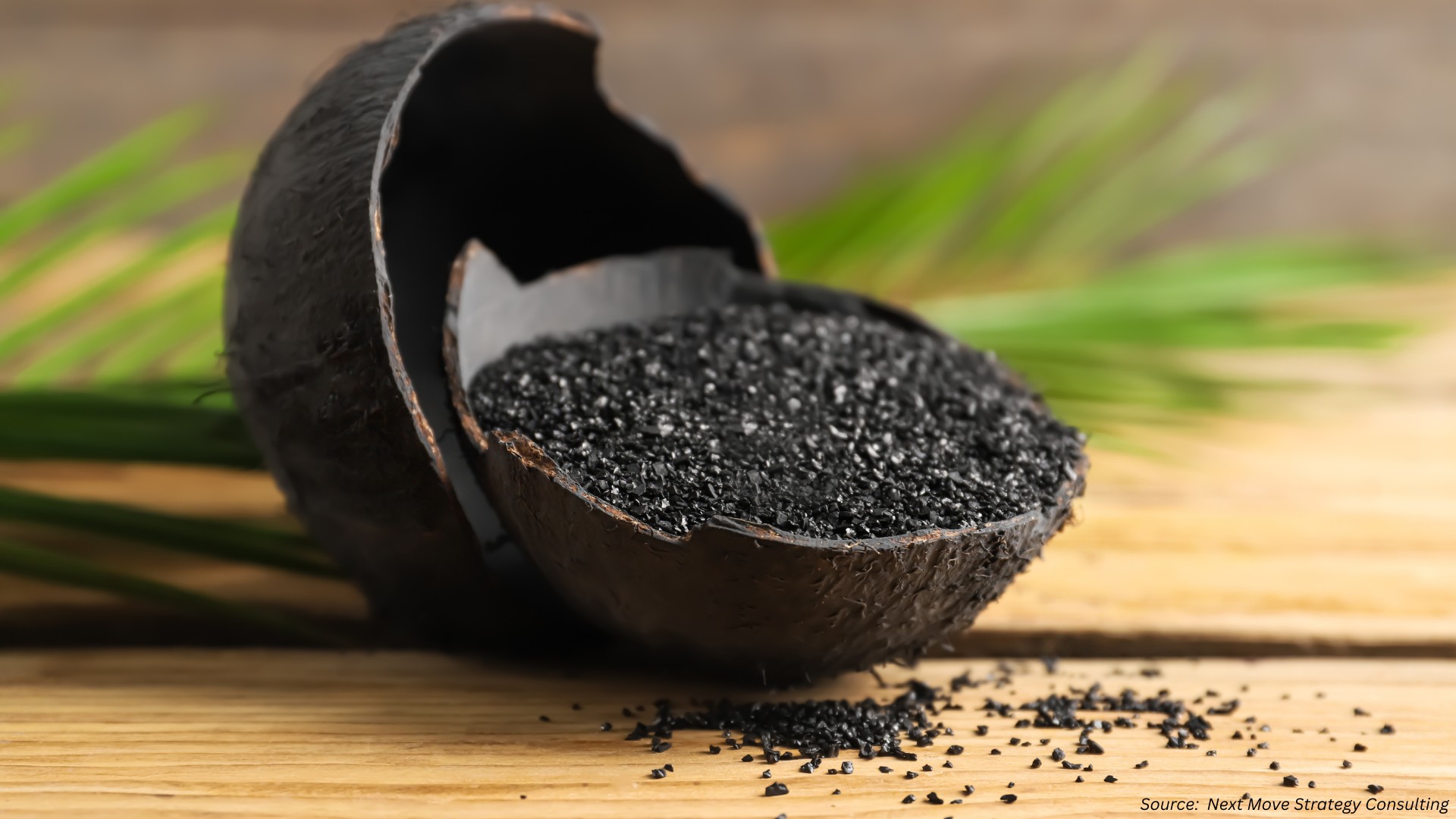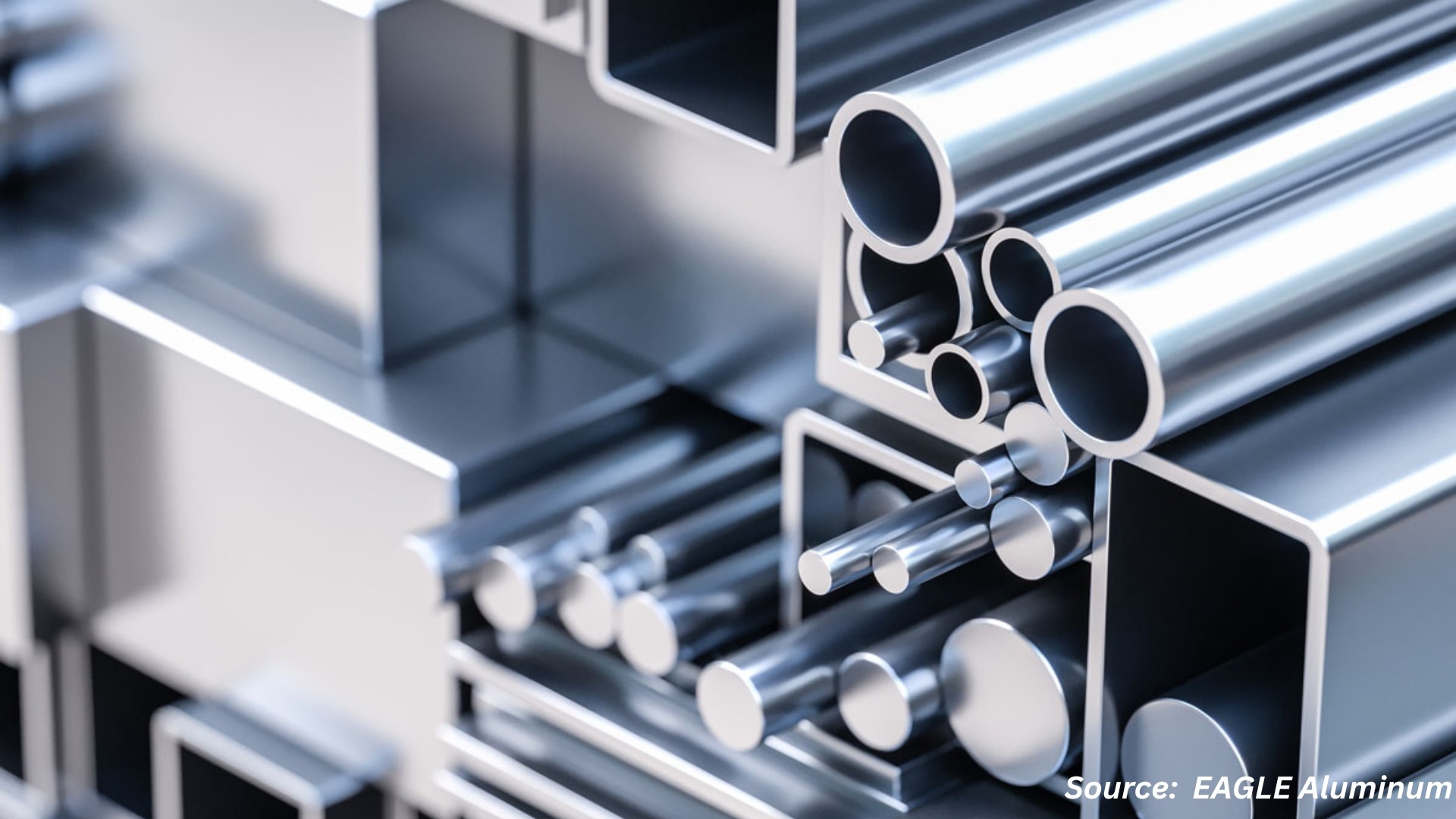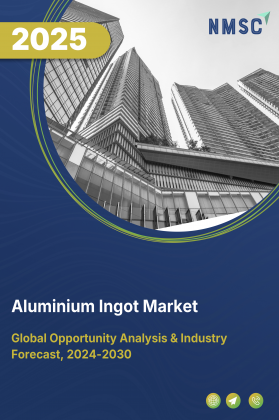
Aluminium Ingot Market by Product Type (Primary Aluminium Ingots, Alloyed Aluminium Ingots and Recycled Aluminium Ingots), by Application (Extrusion Processes, Heat Exchangers, and Others), by Purity Grade (High-purity, Standard purity, and Low-purity), by End-User (Automotive, Aerospace, Building and construction and Others) and by Distribution Channel (Direct sales, Commodity Exchanges, and Others) – Global Opportunity Analysis and Industry Forecast 2025-2030
Aluminium Ingot Market Overview
The global Aluminium Ingot Market size was valued at USD 180.22 billion in 2024 and is predicted to reach USD 193.28 billion by the end of 2025. The industry is predicted to reach USD 274.27 billion by 2030 with a CAGR of 7.25% from 2025-2030.
The global aluminium ingot market expansion is driven by rising demand from the automotive, aerospace, and construction sectors. Lightweight and durable, aluminium is increasingly used in electric vehicles, aircraft, and modern buildings. Rapid urbanization and infrastructure development, especially in Asia and Africa, further boost market growth.
The industry is also embracing sustainability, with growing use of recycled aluminium due to its lower energy consumption. However, the market faces challenges from volatile raw material prices, influenced by geopolitical tensions, energy costs, and supply chain issues. Despite this, opportunities are emerging through the adoption of low-carbon aluminium and cleaner smelting technologies, as regulatory pressure encourages innovation and green manufacturing practices.
Surging Demand from Automotive and Aerospace Sectors Drives the Market Expansion
The aluminium ingot market growth is fuelled by the rising demand from automotive and aerospace industries, both of which hold substantial economic weight.
According to the Alliance for Automotive Innovation in 2025, the automotive ecosystem contributes USD 1.2 trillion annually to the U.S. economy, accounting for 4.8% of GDP, underscoring the sector’s scale and its influence on upstream supply chains like aluminium.
In automotive, the shift toward lightweight, fuel-efficient designs, particularly for electric vehicles, is driving greater use of virgin aluminum in body panels, chassis systems, and battery housings to boost efficiency and meet stringent emission norms.
Similarly, in aerospace, aluminium’s superior strength-to-weight ratio, corrosion resistance, and recyclability make it indispensable for aircraft structures such as fuselages, wings, and landing gear. This combined momentum from two economically significant sectors is not only expanding ingot demand volumes but also accelerating the adoption of high-performance alloys and recycled aluminium, strengthening the market’s long-term growth outlook.
Urbanization and Infrastructure Expansion Fuels the Market Growth
The aluminium ingot market is benefiting from strong momentum driven by rapid urbanization and large-scale infrastructure development, underpinned by broader growth in the global aluminium industry.
According to the World Bank in 2024, urban populations account for 84% of the total population in the U.S. and 37% in India, highlighting both mature and fast-growing urban markets where infrastructure needs remain substantial. This urban expansion, coupled with increased aluminium demand across sectors such as defense, automotive, aerospace, and packaging, provides a robust foundation for sustained market growth.
Rising investments in housing, transportation networks, commercial hubs, and smart city projects are boosting aluminium consumption, as ingots are processed into extrusions, sheets, and structural components used in window frames, curtain walls, cladding, and electrical systems.
Favored for their durability, corrosion resistance, and recyclability, aluminium products are increasingly chosen to meet modern, energy-efficient building requirements. In emerging economies like India, where urbanization is accelerating, the need for sustainable construction materials is expected to significantly strengthen long-term demand for aluminum alloy ingots.
Expanding Applications Across Diverse Industrial Sectors
The aluminium ingot market is witnessing robust growth as its applications continue to expand across diverse and high-growth industries such as automotive, aerospace, packaging, and consumer goods. Aluminium’s lightweight nature, high strength, corrosion resistance, and recyclability make it a preferred choice for manufacturers aiming to enhance product performance, reduce emissions, and meet sustainability targets. In the automotive sector, especially with the rise of electric vehicles, the increasing use of aluminium ingots for lightweight body panels, chassis components, and battery housings significantly boosts the market.
Similarly, in aerospace, the demand for strong yet lightweight materials for aircraft structures fuels market growth, while in packaging, aluminium’s barrier properties and recyclability support the shift toward eco-friendly solutions. This diversification of end-use industries not only drives demand but also strengthens the market’s resilience, ensuring sustained market expansion in the years ahead.
Volatile Raw Material Prices Limits the Market Growth
Volatile raw material prices remain a significant restraint on the aluminium ingot industry, as the production of aluminium ingots is heavily dependent on stable supplies of bauxite, alumina, and energy, particularly electricity, which accounts for a major portion of smelting costs. Price fluctuations in these inputs, driven by factors such as geopolitical tensions, mining restrictions, weather disruptions, and shifts in global demand, sharply increase production expenses and erode profit margins for manufacturers.
Additionally, aluminium prices on global exchanges like the LME are subject to rapid changes, creating uncertainty for both producers and buyers in securing long-term contracts. This volatility delays capacity expansions, complicates inventory planning, and discourages investment, particularly for smaller or less integrated market players. As a result, unpredictable raw material costs pose a direct challenge to the sustained and stable growth of the market.
Low-Carbon Aluminium and Green Smelting Technologies Creates Future Opportunities for the Market
The growing focus on sustainability is creating significant opportunities in the market through the adoption of low-carbon aluminium and green smelting technologies. With global industries facing stricter environmental regulations and rising demand for eco-friendly materials, producers are increasingly investing in renewable-energy-powered smelting, inert anode technology, and carbon-capture solutions to reduce greenhouse gas emissions.
Low-carbon aluminium not only meets evolving ESG standards but also appeals to environmentally conscious customers in sectors such as automotive, aerospace, construction, and packaging, where sustainable sourcing is becoming a key procurement criterion.
Furthermore, major buyers are beginning to pay premiums for certified low-carbon aluminium, boosting revenue potential for producers who adopt these technologies early. As consumer awareness grows and supply chains prioritize decarbonization, the transition to green smelting presents a long-term pathway for market differentiation, stronger partnerships, and sustained growth in the aluminium ingot industry.
Market Segmentation and Scope of Study
The aluminium ingot market report is segmented on the basis of product type, application, purity grade, distribution channel, production process, end user, and region. On the basis of product type, the market is grouped into primary aluminium ingots, alloyed aluminium ingots, and recycled aluminium ingots. On the basis of purity grade, the market is segmented into high-purity, standard purity, and low-purity. On the basis of production process, the market is categorized into smelter-based primary production, remelt and recycling, continuous casting, and batch casting. On the basis of distribution channel, the market is grouped into direct sales, commodity exchanges, and distributors. Regional breakdown and analysis of each of the aforesaid segments includes regions comprising of North America, Europe, Asia-Pacific and Rest of the World.
Geographical Analysis
The aluminium ingot industry in North America is gaining momentum, supported by a robust automotive and aerospace manufacturing base and a rebound in regional aluminium consumption. According to The Aluminium Association in 2025, North American aluminium demand grew by 3.4% in 2024, reflecting renewed strength across key industries.
The region hosts leading automakers, EV manufacturers, and aerospace giants such as Boeing and Bombardier, all of which depend on aluminium ingots for producing lightweight, durable, and high-performance components. In the automotive sector, stricter emission standards, the push for fuel efficiency, and rising EV adoption are boosting the aluminium ingot market growth by increasing aluminium content per vehicle.
Meanwhile, the aerospace industry’s strong production pipelines and order backlogs for aluminium-intensive aircraft continue to drive substantial demand. Combined with North America’s advanced recycling capabilities and focus on sustainable manufacturing, this industrial strength is positioning the market in the region for sustained growth and expansion.
The aluminium ingot sector in Europe is being strongly driven by the region’s stringent environmental regulations and its leadership in green manufacturing practices. The European Union’s policies—such as the European Green Deal and tighter carbon emission standards—are pushing industries to adopt low-carbon materials and increase the use of recycled aluminium. This regulatory push is boosting market growth as automotive, aerospace, construction, and packaging manufacturers turn to aluminium ingots for their recyclability, energy efficiency, and ability to meet strict sustainability targets. In the automotive sector, the shift toward electric vehicles and lightweight designs is increasing aluminium usage, while in construction, green building certifications are encouraging the use of durable, corrosion-resistant materials like aluminium. Combined with Europe’s advanced recycling infrastructure and investments in green smelting technologies, these sustainability-driven measures are creating long-term opportunities for the aluminium ingot market expansion in the region.
The aluminium ingot market in Asia-Pacific is experiencing strong momentum, fueled by rapid industrialization. According to the National Bureau of Statistics, Asia-Pacific’s industrial momentum remains strong, with China’s value-added industrial output climbing 7.7% year-on-year in March 2025. This surge reflects the region’s rapid industrialization, large-scale infrastructure expansion, and growing manufacturing capabilities, all of which are driving robust demand for aluminium ingots.
Major economies such as China, India, and Southeast Asian nations are investing heavily in transportation networks, urban housing, commercial complexes, and industrial facilities. The automotive sector is a key growth driver, with rising vehicle production particularly electric vehicles in China and an ongoing shift toward lightweight, fuel-efficient designs.
Aerospace and packaging industries are also expanding, supported by a growing middle class and increasing consumer spending. With APAC benefiting from abundant raw materials, competitive manufacturing costs, and a strong production base, the region is consolidating its position as both a leading aluminium ingot producer and one of the fastest-growing consumers globally.
The market in the Rest of the World is gaining traction, driven by expanding construction activity and increasing investment in renewable energy projects across regions such as the Middle East, Africa, and Latin America. Large-scale urban development, commercial infrastructure, and industrial projects are accelerating aluminium demand for applications like window frames, roofing, cladding, and structural components, where durability and corrosion resistance are key.
Simultaneously, the global shift toward clean energy—particularly solar and wind power—is boosting market growth, as aluminium ingots are used to produce frames, mounts, and other lightweight yet strong components for renewable installations. In resource-rich countries, rising downstream processing of locally mined bauxite into aluminium products is also strengthening regional supply chains. This combination of infrastructure expansion, renewable energy adoption, and growing local production capacity is positioning the RoW market for steady growth and diversification over the coming years.
Strategic Innovations Adopted by Key Players in the Aluminium Ingot Industry
Key players in the aluminium ingot industry are accelerating global growth through low-carbon production investments, downstream expansion, and strategic long-term supply deals.
-
In 2024, Norsk Hydro intensified its focus on “green aluminium” and recycling, committing significant investments such as a new wire facility at Karmøy and securing long-term supply agreements for low-carbon wire rod to support EU grid projects. The company’s capital-markets disclosures highlighted a strategic pivot toward renewable-powered production, expanded recycling capacity, and multi-year customer contractsaimed at capturing premium low-carbon demand and strengthening its competitive position in the European market.
-
In March 2024, INALUM reported strong production growth, completed its first export of G1 ingots, and advanced its Mempawah SGAR (smelter-grade alumina refinery) along with second-phase plans for downstream expansion. Coupled with Indonesia’s recent refinery openings and INALUM’s pot upgrades, these developments reflect a national push to move up the aluminium value chain, strategically positioning the company to boost regional export volumes and enhance feedstock security.
Key Benefits
-
The report provides quantitative analysis and estimations of the aluminium ingot market from 2025 to 2030, which assists in identifying the prevailing market opportunities.
-
The study comprises a deep-dive analysis of the current and future aluminium ingot market trends to depict prevalent investment pockets in the market.
-
Information related to key drivers, restraints, and opportunities and their impact on the market is provided in the report.
-
Competitive analysis of the players, along with their market share is provided in the report.
-
SWOT analysis and Porters Five Forces model is elaborated in the study.
-
Value chain analysis in the market study provides a clear picture of roles of stakeholders.
Aluminium Ingot Market Key Segments
By Product Type
-
Primary aluminium ingots
-
Alloyed aluminium ingots
-
Recycled aluminium ingots
-
By Application
-
Casting and Foundry Applications
-
Extrusion Processes
-
Rolling Processes
-
Die-Casting Components
-
Electrical Conductors and Busbars
-
Heat Exchangers
-
Structural Components
-
Others
By Purity Grade
-
High-purity
-
Standard purity
-
Low-purity
By Distribution Channel
-
Direct sales
-
Commodity exchanges
-
Distributors
By Production Process
-
Smelter-based primary production
-
Remelt and recycling
-
Continuous casting
-
Batch casting
By End-User
-
Automotive & Transportation
-
Aerospace & Defense
-
Building & Construction
-
Packaging Industry
-
Electrical & Electronics
-
Industrial Machinery & Equipment
-
Consumer Durables (Appliances, Furniture, etc.)
-
Marine Industry
-
Renewable Energy
-
Others
By Region
-
North America
-
The U.S.
-
Canada
-
Mexico
-
Europe
-
The UK
-
Germany
-
France
-
Italy
-
Spain
-
Denmark
-
Netherlands
-
Finland
-
Sweden
-
Norway
-
Russia
-
Rest of Europe
-
Asia-Pacific
-
China
-
Japan
-
India
-
South Korea
-
Australia
-
Indonesia
-
Singapore
-
Taiwan
-
Thailand
-
Rest of Asia-Pacific
-
RoW
-
Latin America
-
Middle East
-
Africa
Key Players
-
Aluminum Corporation of China Limited (Chalco)
-
Rio Tinto Group
-
United Company RUSAL International PJSC
-
Norsk Hydro ASA
-
Hindalco Industries Limited
-
Emirates Global Aluminium PJSC
-
South32 Limited
-
Century Aluminum Company
-
Aluminium Bahrain B.S.C. (Alba)
-
Kaiser Aluminum Corporation
-
Shandong Xinfa Aluminum Group
-
Ma’aden Aluminum
-
PT Indonesia Asahan Aluminium
Report Scope And Segmentation
|
Parameters |
Details |
|
Market Size in 2025 |
USD 193.28 Billion |
|
Revenue Forecast in 2030 |
USD 274.27 Billion |
|
Growth Rate |
CAGR of 7.25% from 2025 to 2030 |
|
Analysis Period |
2024–2030 |
|
Base Year Considered |
2024 |
|
Forecast Period |
2025–2030 |
|
Market Size Estimation |
Billion (USD) |
|
Growth Factors |
|
|
Countries Covered |
28 |
|
Companies Profiled |
15 |
|
Market Share |
Available for 10 companies |
|
Customization Scope |
Free customization (equivalent to up to 80 working hours of analysts) after purchase. Addition or alteration to country, regional, and segment scope. |
|
Pricing and Purchase Options |
Avail customized purchase options to meet your exact research needs |

















 Speak to Our Analyst
Speak to Our Analyst



